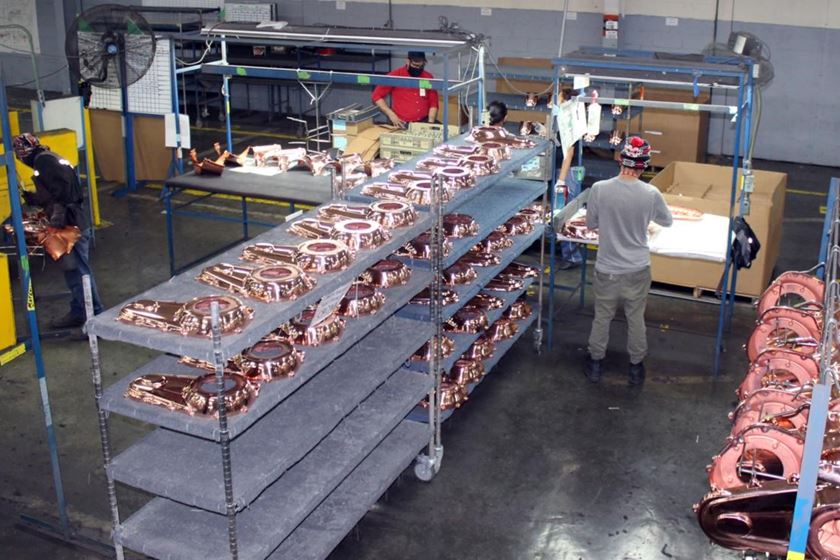Low-Stress Nickel Deposit
What is a low-stress nickel deposit?
Q. We just received a large order for plating parts with “low stress nickel.” What is a low-stress deposit? P.N.
A. As you are probably aware, there are different types of nickel plating baths. The workhorse is the Watts nickel plating bath, which consists of nickel sulfate, sulfuric acid, small amounts of chloride ion and water. This particular bath gives a deposit with residual stress, and that residual stress can cause peeling, blistering and tearing of the deposit. In addition, the deposit may be warped or cracked, and adhesion can be reduced dramatically.
Featured Content
The residual stress in the nickel deposit is affected by the plating bath composition. This table shows some stress values for different types of nickel plating baths:
Solution Anion | Residual Stress (psi) |
Sulfamate | 8,600 |
Bromide | 11,300 |
Fluoborate | 17,000 |
Sulfate (Watts Bath) | 23,100 |
Chloride | 33,000 |
There are two ways that residual stress can be reduced in a plating situation. Stress reducing agents such as saccharin can be added to the bath, or, if the customer specifies a low-stress deposit that is additive-free, a sulfamate-based plating solution is called for. The sulfamate plating bath is more expensive than the Watts-type bath.
The substrate itself also can influence the residual stress of the deposit, as can the temperature of the bath. For example, the stress from a nickel sulfamate plating bath at a temperature of 65°F is 13,200 psi, but 2,500 psi at 104°F.
A good book that discusses the causes of residual stress in more detail is Electrodeposition – The Materials Science of Coatings and Substrates by Jack Dini, which is available on Amazon.com.
RELATED CONTENT
-
Gold and Silver Plating Basics
An overview of precious metal electroplating processes.
-
Blackening of Ferrous Metals
The reasons for installing an in-house cold blackening system are many and varied.
-
Nickel Electroplating
Applications, plating solutions, brighteners, good operating practices and troubleshooting.



















